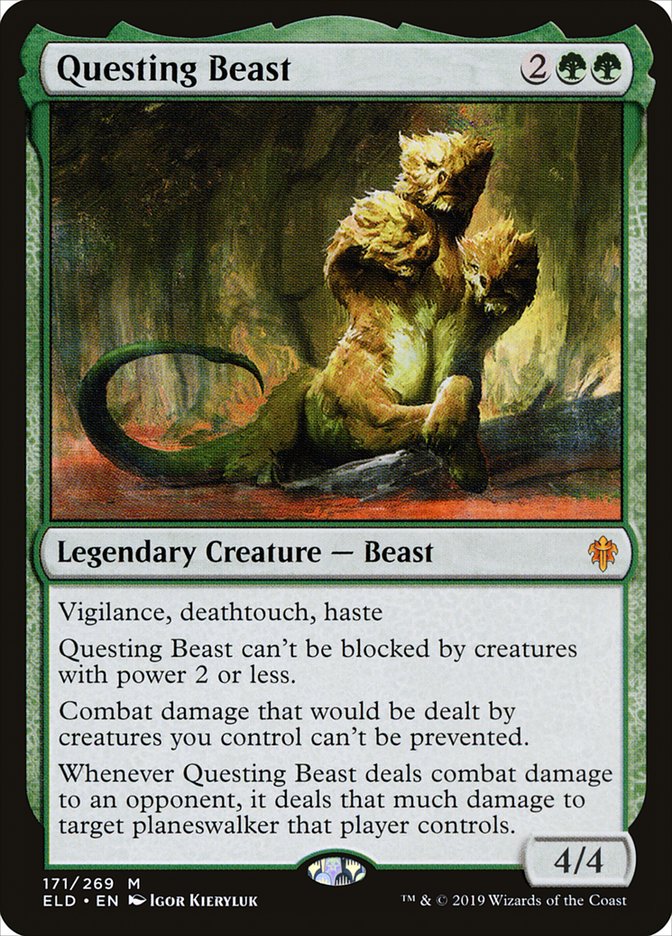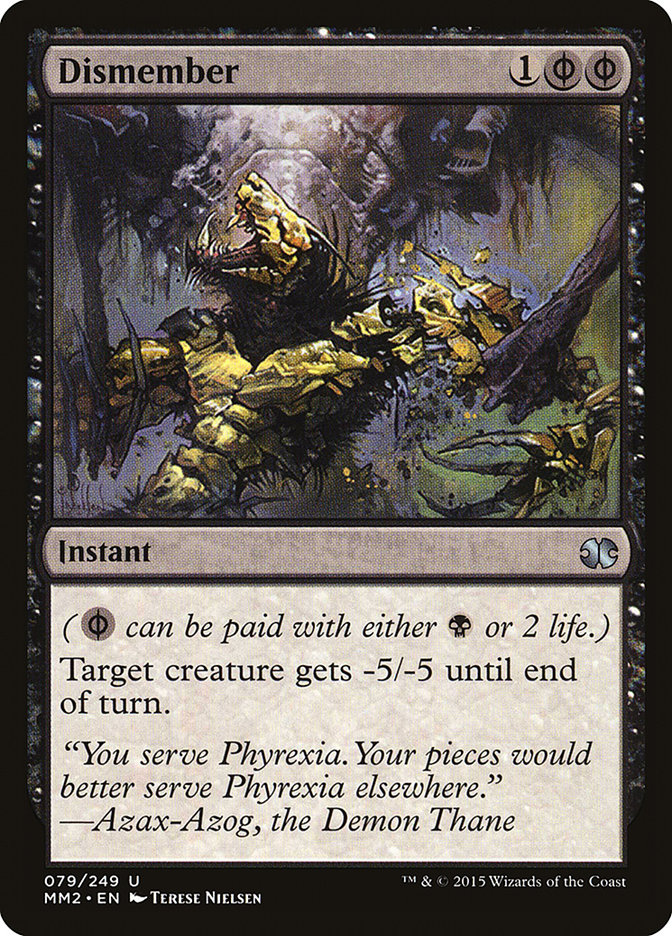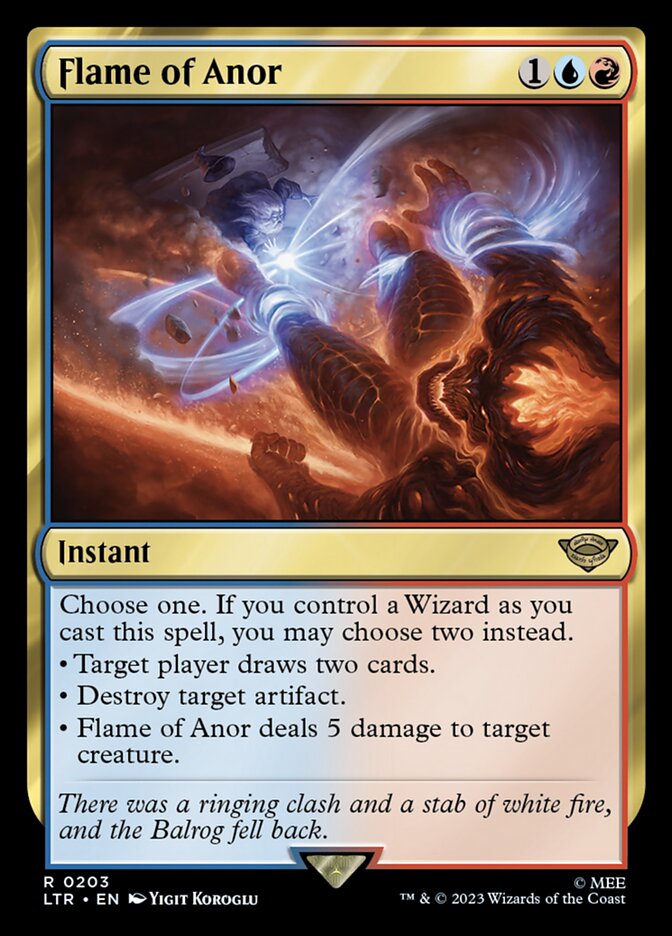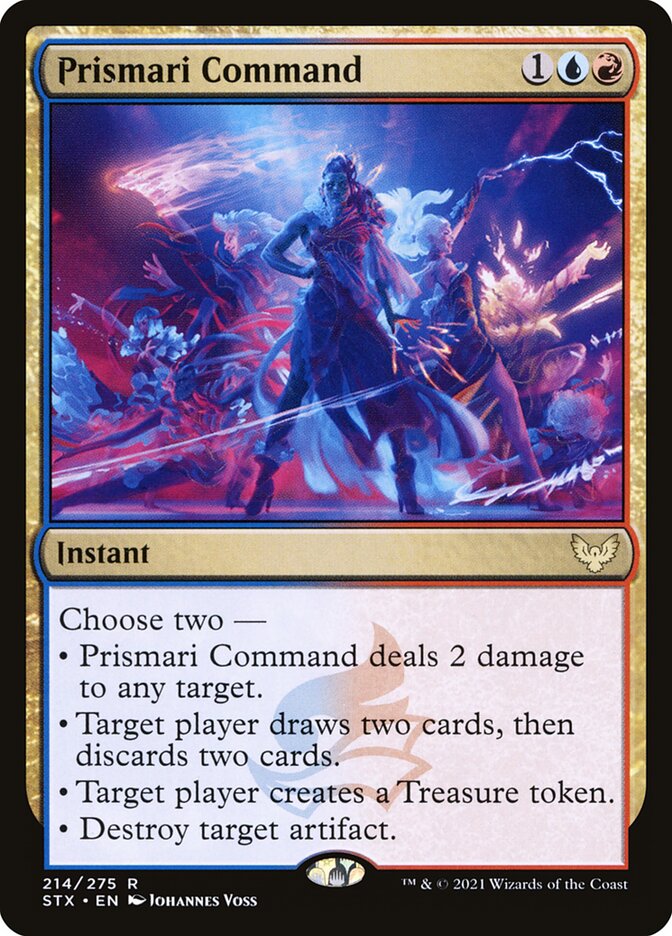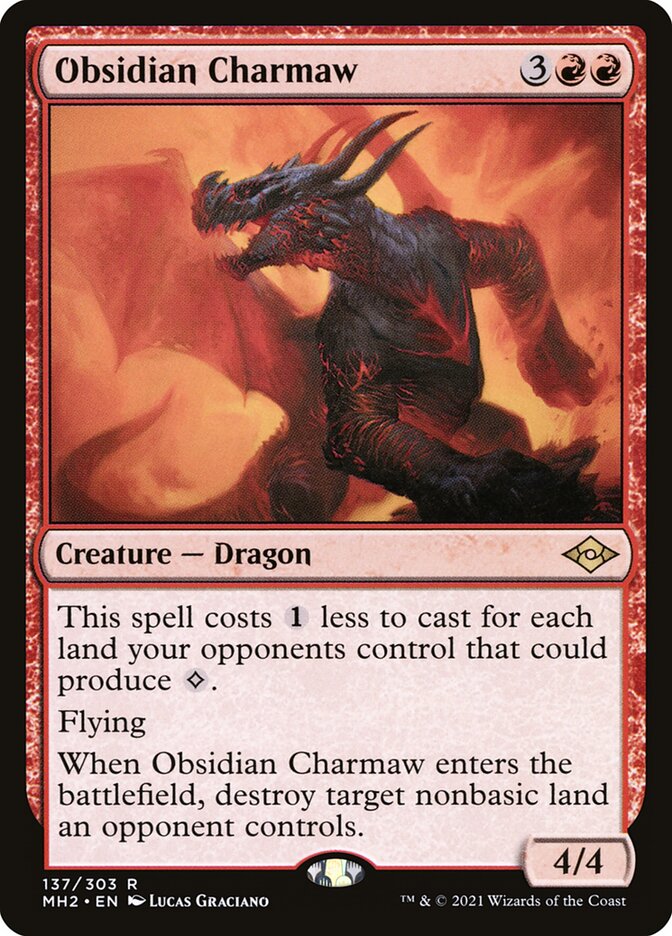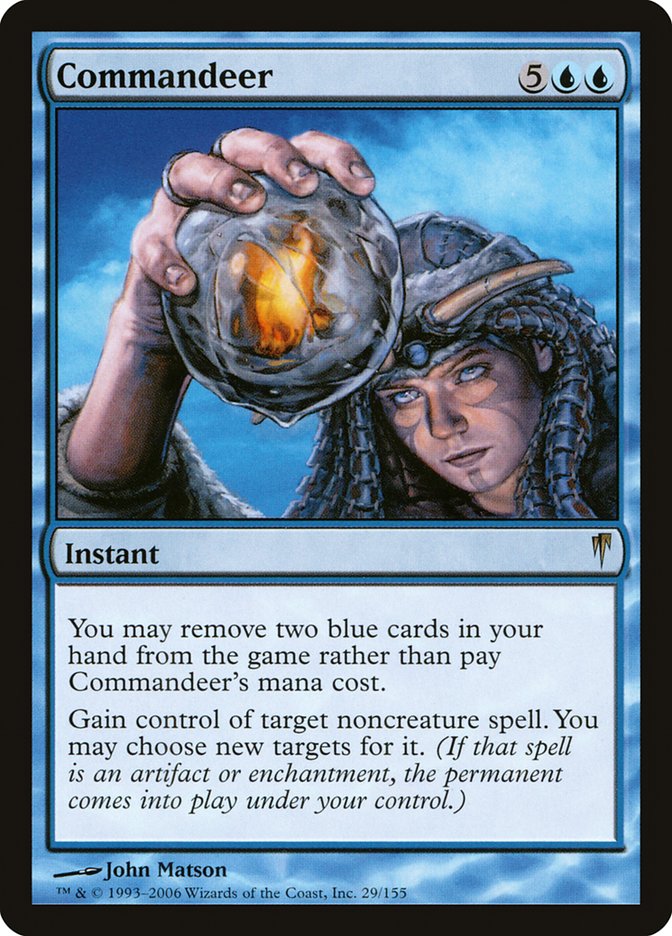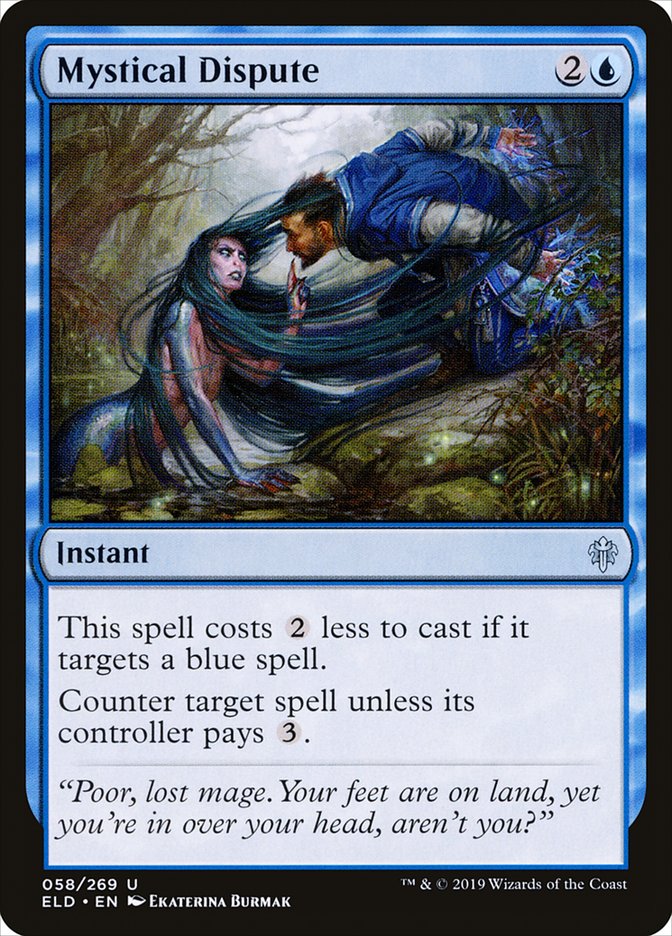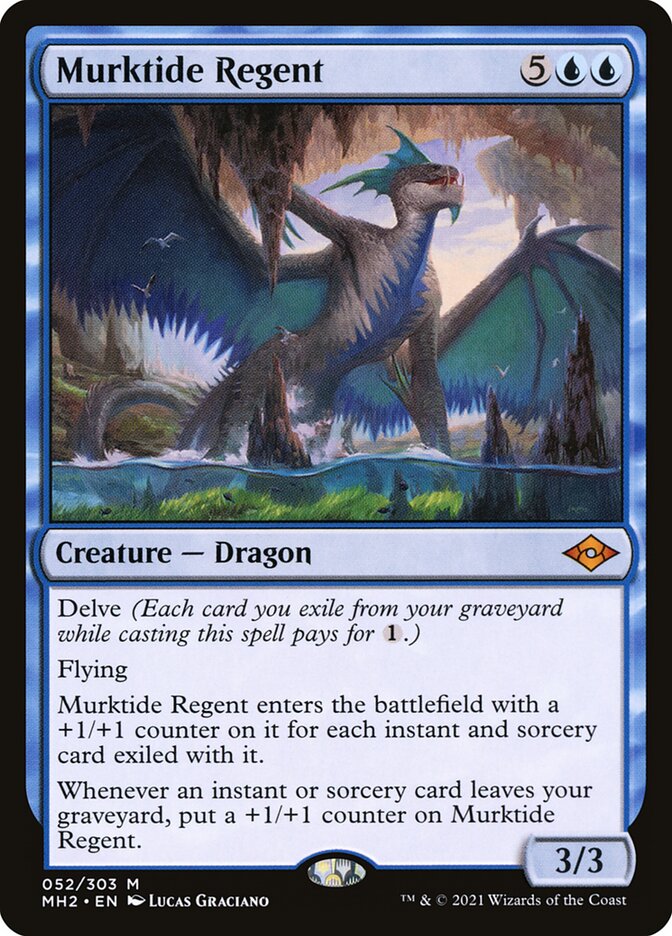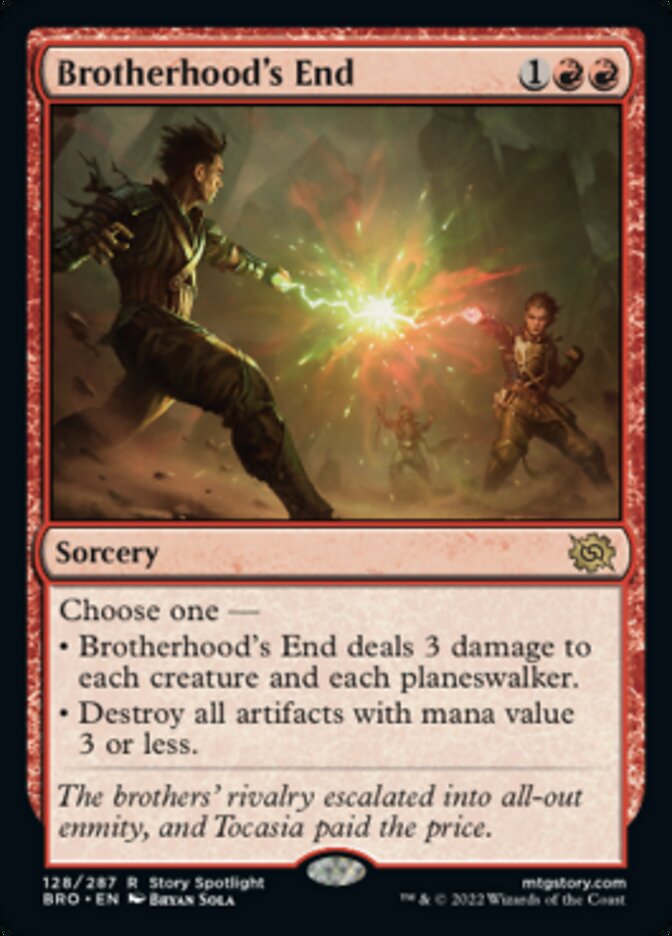Modern Temur Rhinos Indepth & Sideboard Guide
The Magic Con
Magic Con Barcelona was an absolute blast. The event combined a Pro Tour, a Commander Zone, a presence of content creators, a Limited 75k$ event, multiple Pro Tour Qualifiers, the Modern Ragavan tournaments, a myriad of social events, and on-demand events, all under one roof. Kudos to all the organizers for their exceptional work, and I'm overjoyed that The Gathering turned out to be such a hit over the weekend.
Unfortunately, I wasn't qualified for the PT, but the Modern Ragavan events offered substantial value, so I jetted off to Barcelona specifically to participate in them. Several friends were preparing Modern for the PT, and I found myself aiding them in the process, consequently gaining useful insight for my own preparation. I played Rhinos, and having closely followed all the Lords of the Rings implementations, I felt equipped to elucidate the various choices concerning the decklist that were run at the PT. I also plan to share an updated decklist moving forward, complete with sideboard strategies.
Unpacking PT decklists
Kai Budde - Top8

It's really cool to see Kai Budde in the top 8 of a PT. Even better, playing the same archetype as Kai and getting to explore the depth of his list is truly awesome. Let's dive in.
This PT was a lot about The One Ring. There are many angles to challenge this card, either by reducing life totals to make the burden counters heavy, using counterspells because it's a 4 mana sorcery card, or making sure damages can be dealt to ignore The One Ring's entrance ability.
Questing Beast
Of course, Kai Budde had counterspells and creatures but he also played 2 copies of Questing Beast. Having cards that mess with The One Ring's ability is great, but you can't just have a card that does only that. Questing Beast also doubles as a creature that can't be blocked by Yawgmoth, keeping Grist under control, putting pressure on Karn against Tron, and the many planeswalkers of 4c. At the end of the day, it also pressures Teferi, a card that can beat Rhinos all by itself if played and guarded well.
Modern is a very broad format and Questing Beast isn't great against each and every archetype, so it's a card that targets a very specific metagame. The PT was full of 4cc, Tron, Yawgmoth, and the card The One Ring, so well done to Kai for having targeted the metagame so well.
Dismember
Kai has reintroduced Dismember into Rhinos, a card once prevalent but recently underplayed. The Rakdos match-up has two primary types of games: those with an early evoked creature and those involving Ragavan/Dauthi. Having a high density of removal cards in the evoke games provides great top decks when the evoked creature is Grief. When the creature is Fury, there's a short window to find your spot removal, and Dismembers are more outs.
Much like Questing Beast, Dismember is a card employed with a very specific metagame in mind and it might not be as useful in a different metagame
The games featuring Ragavan/Dauthi also demand a lot of removals, making Dismember a much-appreciated card. Some Rakdos decks also run a few copies of Sheoldred, mostly as a 4/5s to block our 4/4s. In the Yawgmoth match-up, the eponymous card plays a pivotal role in stabilizing and ultimately winning, so having the means to deal with it is significant. This is similar in the 4cc match-up, where an unchecked Omnath can single-handedly run away with the game. Furthermore, an early Delighted Halfling can pose a problem, as 4cc will surely resolve The One Ring, making Omnath and Planeswalkers harder to counter (with only Subtlety as a possible response on the stack). Although we already have Fire/Ice and Dead/Gone for the halflings, having more removal options is always beneficial. In the mirror match-up, Dismember can handle half a Crashing Footfalls, which is relevant as fighting over board dominance is much more important than life total.
Much like Questing Beast, Dismember is a card employed with a very specific metagame in mind and it might not be as useful in a different metagame. Given the post-PT era we're currently in, with Tron's impressive performance leading to its popularity, I'm not sure we'd want as many as six main deck spot removal cards.
Flame of Anor
Flame of Anor is an impressive card brought to light by Kai Budde and his team. The card covers many post-sideboard angles used against Rhinos and often finds its place in various match-ups. Chalice of the Void emerged as one of the most played cards in PT Barcelona, chosen mostly as a countermeasure against Rhinos. Flame of Anor acts as a response to this artifact. Its five damage is highly effective, much like Dismember, against Omnath, Yawgmoth, and creatures that Rakdos evoked. Moreover, the 'draw two cards' mode becomes particularly useful in match-ups naturally heavy on counterspells such as U/x Control but not only. Some archetypes, such as 4cc, attempt to fight Rhinos through countermagic (using Flusterstorm, Dovin's Veto, Veil of Summer), and having these reactive cards in hand can sometimes lead them into draw-go sequences. Drawing two cards at the end of their turn is a severe punishment for their unused mana leaving them with the difficult choice of either letting Rhinos draw or weaken themselves in case of a cascade card.
With Subtlety and Force of Negation in the deck, the blue color of Flame of Anor is significant, and Rhinos also play Fury, meaning Flame of Anor can be pitched to these two cards when necessary.
Overall, Kai Budde's list is finely tuned to target the PT metagame, with bold MD choices and the cleverness to reduce the numbers of Force of Vigors and Furys in the sideboard as the archetypes targetted by those cards were quite absent from the PT.
Marco Del Pivo - Top8

Prismari Command
Marco Del Pivo made it to the Top 8 and included a couple of Prismari Commands in his main deck. This card has multiple purposes, such as dealing with Chalice of the Void, keeping in check little creatures, and helping to craft the perfect hand. However, I'm not convinced about using it in the main deck.
I'm curious if Marco Del Pivo was aware of Flame of Anor in the lead-up to the Pro Tour or if this was a deliberate choice.
First, Chalice of the Void is mainly brought into the game after sideboarding (post-sb), so one of the functions of Prismari Command isn't as useful in the main deck games. Also, spending mana to draw cards generally fits better in slower games, which tend to occur less frequently before sideboarding. In the main deck, Rhinos often rely more on their cascade cards, aiming for a more proactive playstyle.
I'm curious if Marco Del Pivo was aware of Flame of Anor in the lead-up to the Pro Tour or if this was a deliberate choice. Despite my doubts, Prismari Command is particularly effective against Hammer Time, where dealing 2 damage and destroying an artifact with a single card can be a significant advantage. Del Pivo could have been respecting this archetype.
Post-PT, Hammer isn’t very popular so I think I'd prefer to have Flame of Anor in the sideboard in the future and leave Prismari Commands out altogether.
Obsidian Charmaw
While I have some reservations about Prismari Command, I'm thoroughly impressed by Del Pivo's inclusion of Obsidian Charmaw in the sideboard. The Blood Moon effect is effective against Tron, and since Tron has many ways to fetch for their Boseiju (with Expedition Map and Sylvan Scrying), the leading strategy up to the Pro Tour was to run Magus of the Moon instead. Being a 2/2, this card can also put some pressure on Karn and Tron's life total. However, Tron's innovation for Barcelona was to include Dismembers, which provided them with answers to Magus of the Moon with a card good on its own in the metagame.
Also, Oblivion Stone is played in heavy numbers in the main deck right now, and while the moon effects can certainly interfere with Tron's land strategy, Tron can still naturally reach 5 mana to activate their Stone, which poses a problem. This is where Obsidian Charmaw comes into play.
This flying creature bypasses the Boseiju tricks and helps secure our ability to slow down Tron in building their land combination. Assuming that Tron will have at most one non-colorless land in play by turn 3, we can usually rely on casting Charmaw on turn 3. Tron often plays midrange games with Stone, The One Ring, and Karn when they are slowed down in assembling their lands, and a 4/4 attacker plays a significant role in those types of games. Additionally, Oblivion Stone needs to hit the 5th land drop, and destroying a land delays this effect by a full turn.
Crumble to Dust is another option to consider instead of Obsidian Charmaw, but its cost of 4 mana means it can be off-tempo when on the draw. The Dragon, on the other hand, can often be cast on turn 3, whether on the draw or the play, making it a more flexible choice.
Commandeer
Marco Del Pivo also included a single Commandeer in his sideboard. At first, I overlooked this card as awkward, but it turns out to be a potent effect in many match-ups. Thanks to Lorien Revealed, Rhinos has a high density of blue cards, making Commandeer reliable to cast. This card can be devastating against Tron and all The One Ring decks, as well as being highly effective in mirror matches. A turn 3 Shardless Agent can't be protected by Force of Negation since it can only be cast for free on the opponent's turn. Stealing the rhinos with Commandeer can single-handedly swing the game.
However, Commandeer is a card that demands a lot of blue cards, and it can be challenging to cast if you've already used a blue card in the game. This makes it a poor draw late in the game. Fortunately, all the Forces of Negation and Subtlety provide the ability to discard our situational cards, greatly reducing instances where the card is ineffective.
Lands & Disputes
As for the basic land split, Marco Del Pivo used 2 islands, 1 forest, and 1 mountain. The inclusion of Island and Forest is standard, providing protection against Blood Moon and helping to save life by avoiding fetching for shock lands. However, the mountain is a newer addition. It follows the same principle of minimizing life loss, especially crucial in aggressive match-ups during the first few turns when casting a spell like Dead//Gone on a curved creature.
Marco was also running fewer Mystical Disputes in his main deck than Kai Budde, resulting in a decklist that seems more adapted to a wider range of opponents. He included a mountain for additional protection against aggressive decks, and overall, he played more Force of Vigors and Furys.
Updated Decklist
The list I’d run going forward

| Creature [11] | ||
|---|---|---|
| 1 Murktide Regent | $17.99 | |
| 4 Subtlety | $22.99 | |
| 4 Shardless Agent | $0.49 | |
| 2 Brazen Borrower | $8.99 | |
| Instant [19] | ||
|---|---|---|
| 4 Violent Outburst | $2.79 | |
| 3 Mystical Dispute | $0.39 | |
| 4 Fire/Ice | $0.35 | |
| 4 Force of Negation | $44.99 | |
| 4 Dead/Gone | $0.35 | |
| Sorcery [8] | ||
|---|---|---|
| 4 Crashing Footfalls | $2.99 | |
| 4 Lórien Revealed | $3.49 | |
| Land [22] | ||
|---|---|---|
| 2 Gemstone Caverns | $54.99 | |
| 4 Wooded Foothills | $32.99 | |
| 1 Breeding Pool | $20.99 | |
| 1 Stomping Ground | $13.99 | |
| 4 Misty Rainforest | $23.99 | |
| 2 Steam Vents | $17.99 | |
| 1 Mountain | $0.01 | |
| 1 Ketria Triome | $14.99 | |
| 2 Island | $0.01 | |
| 1 Otawara, Soaring City | $24.99 | |
| 1 Boseiju, Who Endures | $49.99 | |
| 1 Forest | $0.01 | |
| 1 Scalding Tarn | $22.99 | |
| Sideboard [15] | ||
|---|---|---|
| 2 Fury | $7.99 | |
| 1 Commandeer | $1.29 | |
| 2 Brotherhood's End | $7.99 | |
| 1 Mystical Dispute | $0.39 | |
| 3 Obsidian Charmaw | $0.49 | |
| 3 Flame of Anor | $6.99 | |
| 1 Force of Vigor | $9.99 | |
| 1 Murktide Regent | $17.99 | |
| 1 Boseiju, Who Endures | $49.99 | |
 $229.31 Tix @cardhoarder
$229.31 Tix @cardhoarder
 $5.73 / Week @cardhoarder
$5.73 / Week @cardhoarder
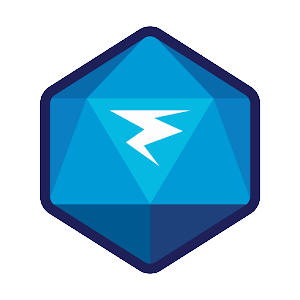 $840.07 @tcgplayer
$840.07 @tcgplayer
 $1,006.81 @cardkingdom
$1,006.81 @cardkingdom
Card Choices
Lands
I chose to include the Mountain in my deck. Having this option is enjoyable against aggressive opponents and it's even more useful with Brotherhood's End (more on this later), which can be costly to cast without the Mountain.
The mix of fetch lands is fairly standard. We're playing a full set of forest-searching fetches, mainly because we often suspend Crashing Footfalls on the first turn. In a closed decklist environment, this is even more crucial. When we're on the play, and we don't know whether our opponent is running an aggressive deck, we want to avoid fetching a ravland.
Obsidian Charmaw
I'm particularly fond of the Obsidian Charmaw tech, a strategy pioneered by Del Pivo. I've committed to running as many as three of them in my sideboard. Including a card in such a large quantity in the sideboard is a significant commitment, but the Tron match-up is tough and has performed well at the Pro Tour, so it's worth taking it seriously.
We could have a second Force of Vigor instead of the third Charmaw to show more respect to Hammer decks, but this particular deck isn't widely played right now. This might change, as Hammer has favorable match-ups against Tron and Rakdos, and an even performance against Rhinos. Adjustments may be needed in the future.
Murktide Regent
I'm including one maindeck and one sideboard Murktide Regent. This card has become more valuable since the mirror match has grown in popularity after the PT. Murktide Regent excels in trade-heavy match-ups like Rakdos, so Rakdos + Rhinos = approx. 25% of the metagame which is already a ton for a sideboard card, let alone few matches where the card is good too (Izzet Murktide, for example).
Brotherhood's End
Brotherhood's End is a tech card I discovered with my French friends. It functions similarly to Flame of Anor, offering relevant abilities and the option to destroy Chalices. Since Chalice is a 0-mana artifact that anyone can play, you can't justify bringing in a card that destroys artifacts if your opponent doesn't have any. Brotherhood's End acts as a Flame of Anor-like option against creature decks and shines against Yawgmoth and Rakdos, wiping out most creatures while sparing our Rhinos.
Sideboard & Matchups Guide
Rakdos Evoke
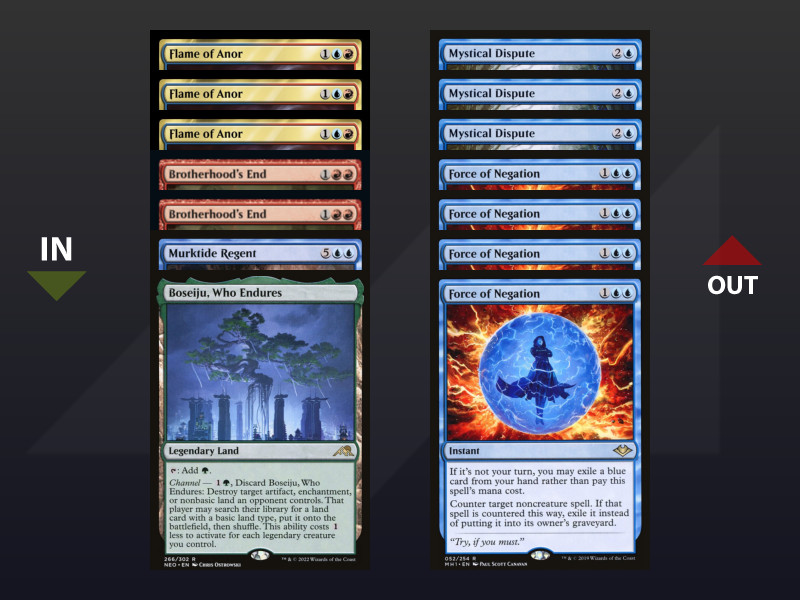
Rakdos decks play a large number of discard cards so we'll often be at the mercy of our next draw. In those situations, counterspells are particularly weak, so I side-out all of them but Subtlety. Force of Negation doesn't adequately protect us from the Grief/Feign Death combo, as the instant spell is cast after the initial occurrence of discard. Mystical Dispute is card hard to cast since we’re often so behind on the board at this stage of the game, which makes it a very “late game” card, particularly useful to counter hard-cast Grief and Furys.
However, Subtlety can protect us from the evoke curves while being even better than Mystical Dispute in the late stages of the game. Also, a 3/3 flash flying can somehow ambush some creatures or breaking parity when the board is stalled.
Overall, our game plan is straightforward: destroy everything, make some favorable trades with our rhinos, and eventually win with whatever resources we have left. This match-up allows us to keep slower hands without Crashing Footfalls, as the game is likely to go on for a while.
We bring in Boseiju and always keep Gemstone Caverns in our deck. It's crucial that we have the land drops needed to cast any top-decked cards.
Rhinos
On the play

On the Draw
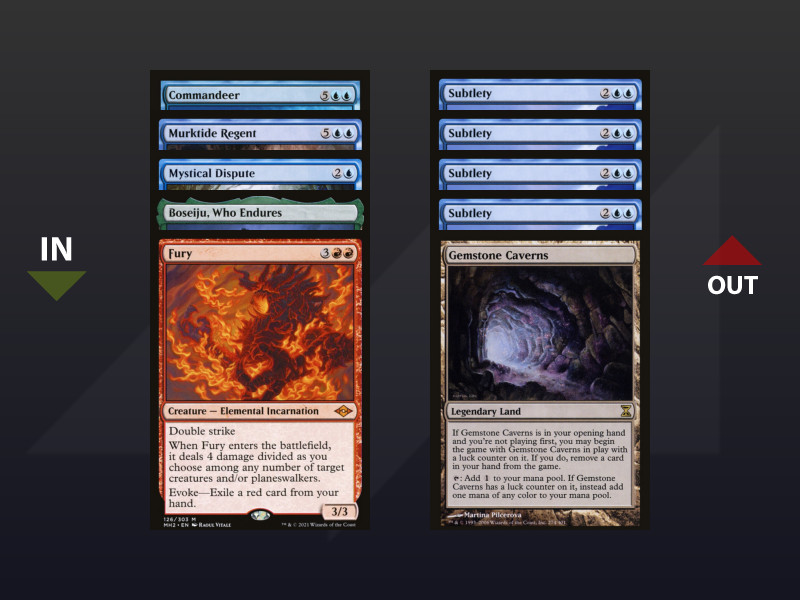
The mirror match is centered around the rhinos, as both players have 12 instances of Crashing Footfalls in their decks. Rhinos are incredibly effective when played from ahead, thanks to the counterspells and the pressure applied by the 4/4s. In this match-up, we want to avoid at all cost being behind on the board, so we want cards that trade well with Rhinos, such as Furys; cards that prevent Rhinos from coming into play, like Commandeer or Mystical Dispute; and cards that outclass the 4/4 Rhinos, such as Murktide Regent.
Omnath 4c

Many of their cards can be problematic, and they'll eventually manage to get them into play. A single Omnath, a Teferi, or even The One Ring can win the game. The 4cc archetype is slow and somewhat clunky because it relies on many colors and taplands. Our strategy is to try to play "under" this, creating tempo windows where our 0-mana counterspells excel.
I do side out a Crashing Footfalls in this match-up. When we've already resolved 3 Crashing Footfalls and would do with a 4rth one, it's usually a bad sign anyway. Crashing Footfalls is a card I really don’t like to draw naturally because if we suspend it, 4cc can sequence plays to have a Teferi or a Chalice intercept it at just the right time, which is devastating.
Flame of Anor is outstanding in this match-up because it counters many of their angles. Sure, they have Omnaths and Chalice but it allows us also to craft a great hand situation when they play too much at instant speed.
Yawgmoth
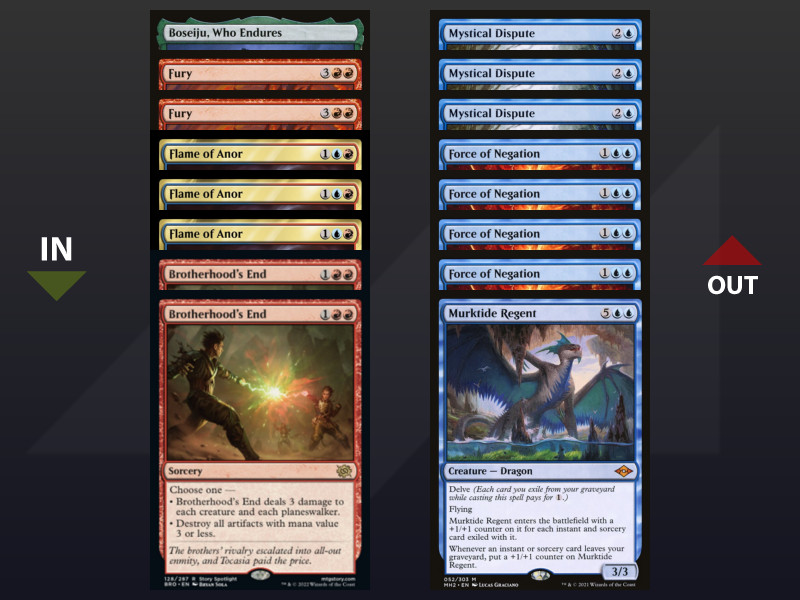
Yawgmoth decks can win the game by using their namesake card to stabilize against our rhinos. Yawgmoth's power depends on the number of creatures they have on the field, so one way to combat this legendary black creature is to eliminate the smaller creatures surrounding it. Essentially, our game plan is to destroy everything in our path, get our rhinos into play, and pressure their life total. At some point, this will force them to make unfavorable trades with our rhinos, which will eventually win the match. This is a match-up that is won and lost by losing the board state, the first who loses their creatures loses the game.
Tron

Tron excels at playing problematic cards every turn, sometimes even multiple cards. Because of this, we need to create pressure on the board before we have to cast our counterspells. If we don't, we might find ourselves in a downward spiral, forced to use our mana to counter cards every turn, and eventually losing with a Shardless Agent left unused in our hand.
This is another reason why Obsidian Charmaw is such an excellent choice. It not only slows down Tron but also applies pressure on the opponent. With as many as three of these in our sideboard, we should be well-prepared for this match-up.
Final Thoughts
You may notice that my explanations of the match-ups are quite simple, even though I typically delve deeper into details. The Rhinos archetype plays the card Crashing Footfalls 12 times and includes 10 or more counterspells, so the games are similar.
Once you understand the match-ups, the games become relatively straightforward, making Rhinos an excellent choice for those new to Modern. However, lacking a clear overall strategy can lead to harsh consequences. Since you often play the same type of game, if your plan is flawed, the problems will surely manifest.
Until next time,
Rémi Fortier


